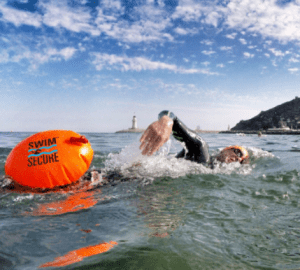The native origins of freestyle
How white people named a style of swimming indigenous people had mastered millennia before
“In 1492, Columbus sailed the ocean blue,” begins the rhyme school children in America are taught to help them learn about the “discovery” of the Americas by an Italian sailor who’s reverence by a nation grateful for having been “found” extended to having his own holiday in mid-October.
From kindergarten onward, most American children are reminded that Columbus was sailing in search of treasure for Spain with the ships – the Niña, the Pinta, and the Santa Maria – bravely parting the waves of the Atlantic, far from the safety of the known world.
What’s often left out of the story is how brutal this mercenary and his crew of colonisers were to the natives they found along the shorelines of the “New World.” For generations, American children have been fed the storyline of the flourishing establishment Columbus’ great journey launched for white Europeans, with little regard paid to the Native Americans who were already dwelling on those lands.
They are told how the natives welcomed these invaders peaceably. But the vehemence with which these overtures were rejected by the intruders is often under-emphasised.
In his journal, Columbus wrote of meeting the Arawak natives in the Bahamas in 1492. “They … brought us parrots and balls of cotton and spears and many other things … They willingly traded everything they owned…. They were well-built, with good bodies and handsome features…. They do not bear arms, and do not know them, for I showed them a sword, they took it by the edge and cut themselves out of ignorance. They have no iron. Their spears are made of cane…. They would make fine servants…. With fifty men we could subjugate them all and make them do whatever we want.”
As if those musings weren’t bad enough, Columbus straight away got to work indulging his worst imperial impulses. “As soon as I arrived in the Indies, on the first Island which I found, I took some of the natives by force in order that they might learn and might give me information of whatever there is in these parts.”
But Columbus also made quick note of the natives’ swimming abilities – such facility with the water underscored the foreignness of these people, given that most of Europe had forgotten how to swim at all after the fall of the Roman Empire.
After an initial, cautious interaction with the indigenous Tainos, part of the Arawak nation in the Bahamas, Columbus and his men returned to their ships where Columbus wrote that the natives had followed after in canoes and via swimming.
When Columbus sailed onward and landed in Cuba, more than a thousand natives came out to greet his ship in canoes, and “besides these there came about five hundred, swimming for want of canoes, the ships being anchored near a league from shore,” he noted. A significant situation, indeed.
Leveraging a remarkable skill








